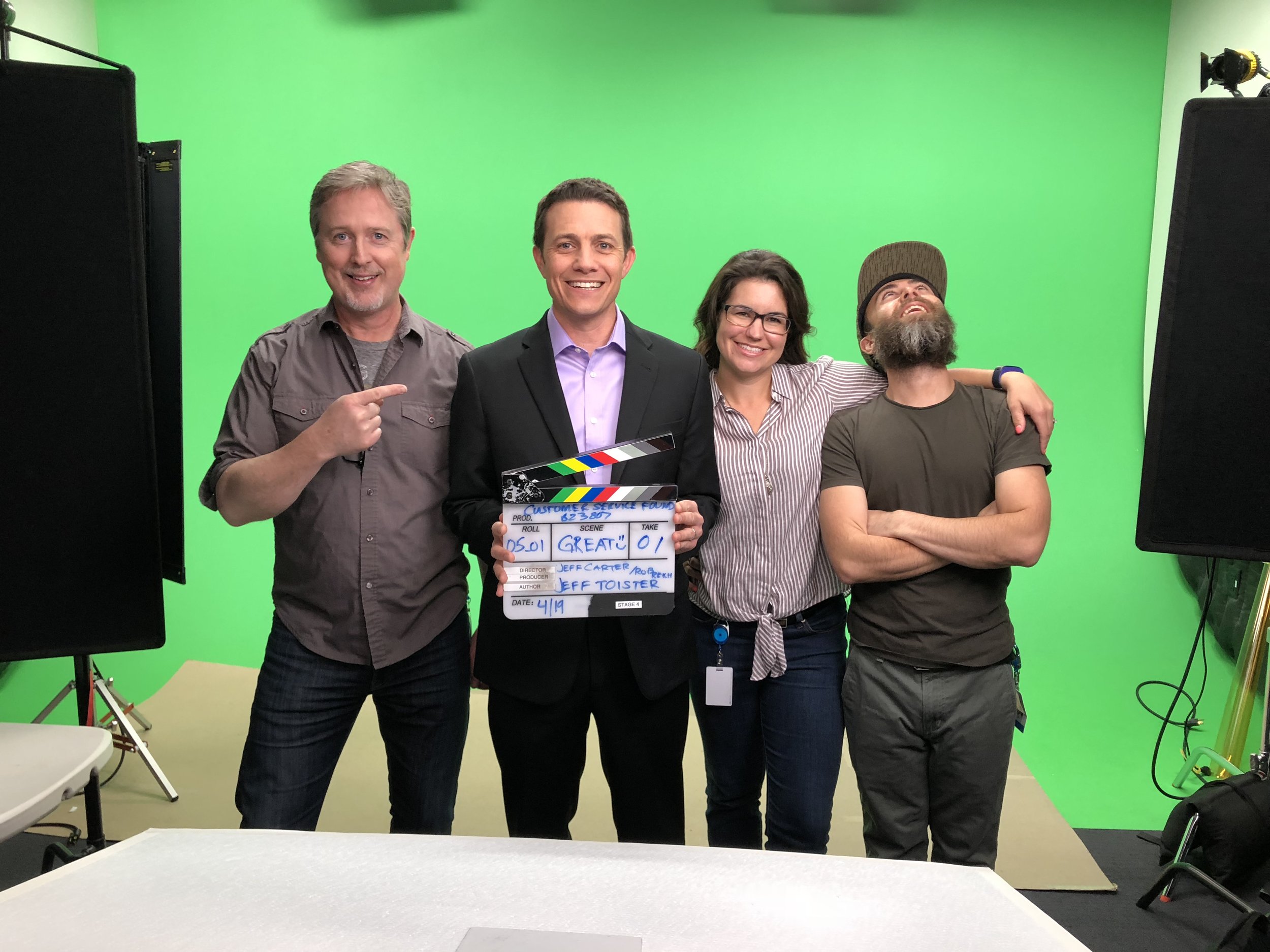LinkedIn Learning has just released a new edition of my Customer Service Foundations course. It's a training video designed to help people learn the fundamentals of service.
Creating a course like this requires some tough decisions:
Which skills are most important and must be covered?
How in-depth should each skill be addressed?
Which skills are useful, but best saved for a separate course?
These decisions are critical. Include too much content and learners can get overwhelmed. Include too little, and learners won't get enough value. It has to be just right.
I based my choices on extensive research, interaction with thousands of customer service professionals, and a bit of trial and error.
Here's a list of the top four skills I think every service professional needs.
On the set filming Customer Service Foundations. From left to right: Jeff (Director), Jeff (me), Sam (Producer), and Rob (Production Lead).
Vision
If I had to pick just one customer service skill, this one would be it.
Having a vision means understanding and articulating a desired positive outcome for the customers you serve. An IT service desk professional I worked with once described his vision by saying, "I used to say I fixed computers; now I realize what I really do is help people get back to work."
That change of perspective from transactional (fix computers) to a positive vision (help people get back to work) can dramatically alter how you approach service.
I've noticed that people who have a strong customer service vision tend to figure out the other skills they need pretty quickly. Those who don't often find themselves stuck.
It's great if your company already has a customer service vision statement to follow. If not, you can create one by taking the Thank You Letter Challenge.
Rapport
Service gets easier when we can build rapport with the people we serve.
It helps us create a connection and develop a sort of shared kinship where we both take responsibility for making the experience a great one.
In one study, I discovered customers who mentioned an employee by name in a survey were 1.5 to 4 times more likely to give a top score (5 stars, etc.) than a negative one.
Introducing ourselves and sharing our name is a skill you already have. You can add to your rapport toolkit by learning the five question technique. Here's a video explainer:
Listening
Most people are pretty good at listening—when they put their mind to it.
The challenge is we often face unseen obstacles that discourage us from using our listening skills. Here are just a few examples:
Being in a hurry makes us instinctively want to listen less.
Multitasking makes it more difficult to listen.
Judging the other person makes harder to truly understand them.
Elite customer service professional prioritize listening to customers. And they don't just listen for the customer's rational needs, they try to uncover the emotions behind it.
One study surveyed airline passengers who experienced a flight delay or cancellation. The single issue that drove the most customer frustration was not the service failure itself, but the way it was handled.
Here's a short video that shows you how to identify emotional needs.
Problem Solving
Must of customer service comes down to our ability to solve problems. This gets easier if we've already mastered the first three skills:
Vision focuses our desire on a positive outcome for the customer.
Rapport makes customers more open to our ideas.
Listening helps us better understand what customers really need.
Of course, we've all been frustrated as customers by nagging problems that just can't seem to get solved. Often the missing element is ownership.
Many people confuse ownership for blame. They worry about being responsible for causing the problem, so they try to avoid it.
What ownership really means is taking responsibility for solving the problem. Here's a short video from the course that explains it.
Take Action!
Here are a few action items you can implement right now!
Try implementing each of these four skills.
Share which skills are on your Top Four list.
Take the full Customer Service Foundations course.
You can find the course on LinkedIn Learning. You'll need a subscription, but a free 30-day trial is available.


